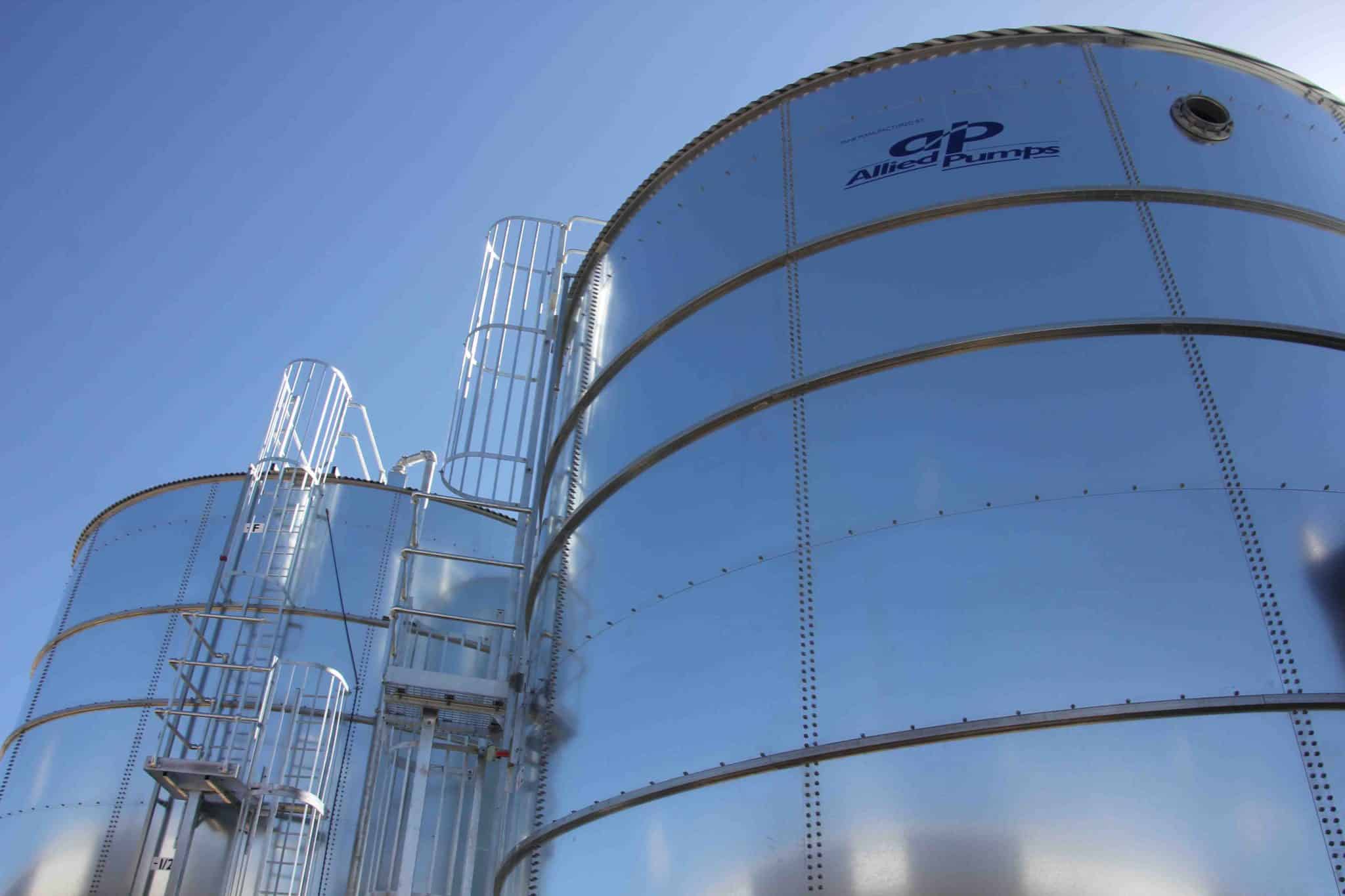
When it comes to selecting the right type of tank, the two options that often come to mind are steel tanks vs concrete tanks.
Each offers distinct advantages and disadvantages, making the choice between them a crucial decision for engineers, project managers, and stakeholders alike.
Today, we will compare steel vs concrete tanks, exploring their respective strengths and weaknesses to help you make an informed decision.

Steel tanks offer a notable advantage in terms of installation speed and simplicity. Compared to other types of water storage tanks, steel tanks can be erected relatively quickly due to their modular design and construction.
This can result in reduced project timelines and labour costs, making them an attractive option for projects with tight deadlines or in remote areas.
Steel tanks are renowned for their exceptional strength-to-weight ratio. This means that despite being lightweight compared to concrete tanks, they offer impressive structural integrity and durability.
As a result, steel tanks are particularly resistant to vibrations, with the flexibility and resilience of steel helping to mitigate the impact of ground movement.
One of the key advantages of steel tanks is their inherent resistance to corrosion. Unlike concrete that may degrade over time, steel is highly resistant to corrosion.
This property significantly reduces the need for ongoing maintenance and repair, resulting in lower lifecycle costs for steel tanks compared to their concrete alternative.
Steel tanks offer unparalleled flexibility in terms of design and customization options. They can be fabricated to virtually any size or shape to accommodate specific project requirements.
Additionally, the steel construction materials can be coated or manufactured to meet desired criteria, such as enhanced corrosion resistance or compatibility with different types of stored liquids.
This adaptability allows for greater versatility in tank design and ensures that steel tanks can be tailored to suit a wide range of applications and environments.

One of the primary drawbacks of steel tanks is their higher initial cost compared to concrete tanks. The materials and fabrication processes involved in manufacturing steel tanks typically result in higher upfront expenses.
However, steel tanks offer long-term cost savings in terms of reduced maintenance and cheaper transport, especially to remote areas.
Despite their durability, steel tanks generally have a shorter lifespan compared to concrete tanks. Nevertheless, appropriate product design, maintenance, and protective measures can significantly extend the lifespan of steel tanks.

In many cases, concrete tanks offer a lower initial cost compared to steel tanks. The materials used in the construction of concrete tanks can be more cost-effective than the specialized alloys required for steel tanks.
However, the installation process is often more laborious and transportation costs can be higher if the tank is to be installed in a remote location.
Concrete tanks are renowned for their durability and longevity. When properly designed, constructed, and maintained, concrete tanks can provide reliable storage solutions for several decades.
One downside is that concrete tanks require regular inspection and maintenance to ensure maximum lifespan is achieved. Cracks and leaking are recurring issues, especially if the tank is exposed to vibrations and ground movement.

Despite their durability, concrete tanks are susceptible to cracking or leaking if they are not properly reinforced or maintained.
Over time, factors such as settlement, ground movement, temperature fluctuations, and chemical exposure can cause concrete to crack or degrade, compromising the integrity of the tank structure.
Regular inspections, maintenance, and repairs are essential to identify and address any potential issues before they escalate into significant problems.
Without proper reinforcement and maintenance, concrete tanks may experience leaks or structural failures, leading to costly repairs or replacement.
Constructing concrete tanks typically involves a longer installation process compared to other types of water storage tanks. The preparation of the site, forming, pouring, and curing of concrete all require meticulous attention to detail and skilled labour.
Additionally, specialized equipment such as concrete mixers, pumps, and formwork may be necessary to ensure proper construction.
The extended installation timeline and the need for skilled labour can result in higher labour costs and project delays compared to steel tanks.
Concrete tanks offer less flexibility in terms of design and customization options compared to other types of water storage tanks.
While concrete can be moulded into various shapes and sizes during construction, significant deviations from standard designs may be challenging or impractical to achieve.
This limited flexibility can be an issue for projects with unique space constraints, aesthetic requirements, or specific performance criteria that cannot be met with off-the-shelf concrete tank designs.
Concrete tanks are heavier and bulkier than most types of water storage tanks, resulting in higher transportation costs.
The transportation of precast concrete components or ready-mix concrete to the construction site requires specialized vehicles and equipment, which can contribute to increased logistics expenses.

At Allied Pumps, our tank panels and fixtures are fabricated in-house and delivered to site ready for our team to install.
To minimise the risk of working at height, we have developed an integrated system of “Tank Jacks” to assist in the construction process.
The electric Tank Jacks are attached to each of the vertical joints around the tank and raised to height to allow workers to safely complete the next ring. The result is a safer and faster installation process.
For more information on our storage tanks and installation capabilities, contact our team today!

Contact us to learn about how we can help you with your pump needs.
CALL US NOW EMAIL US